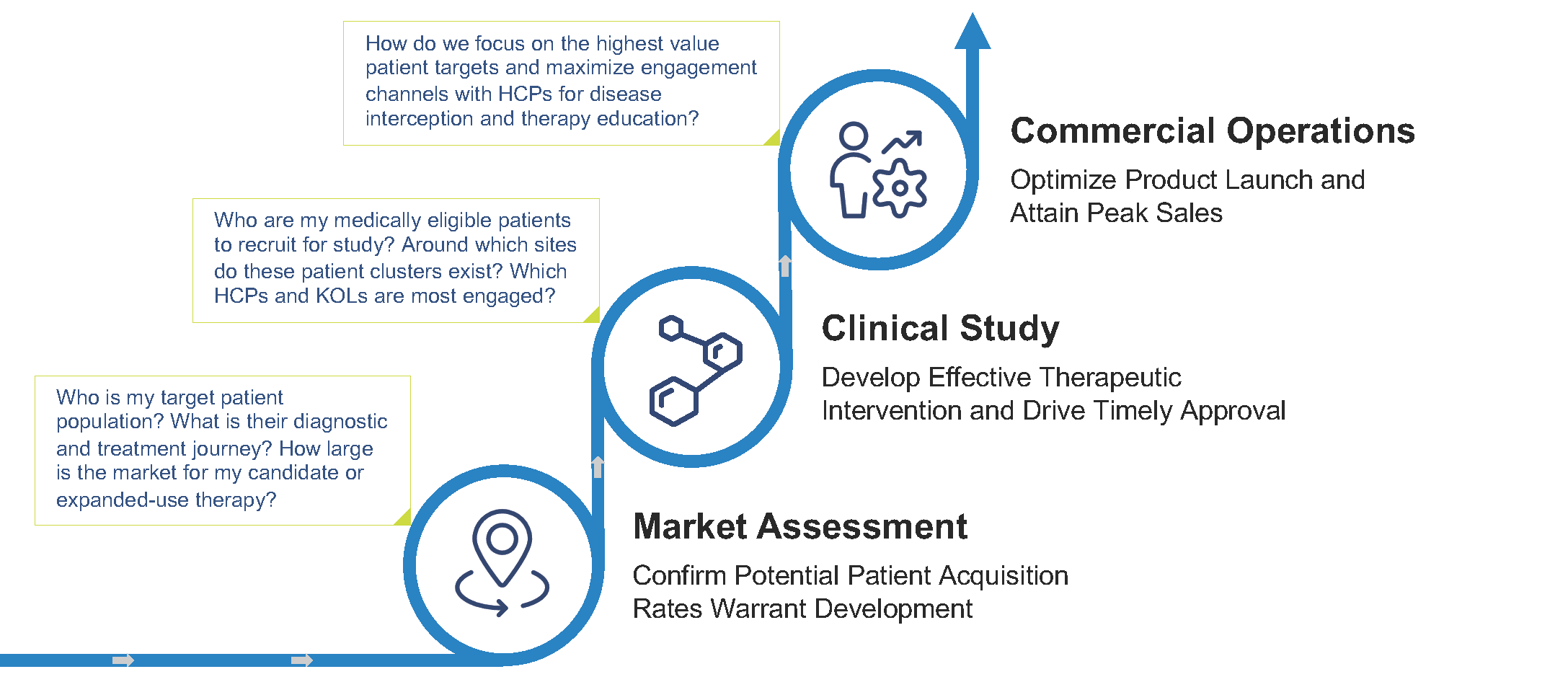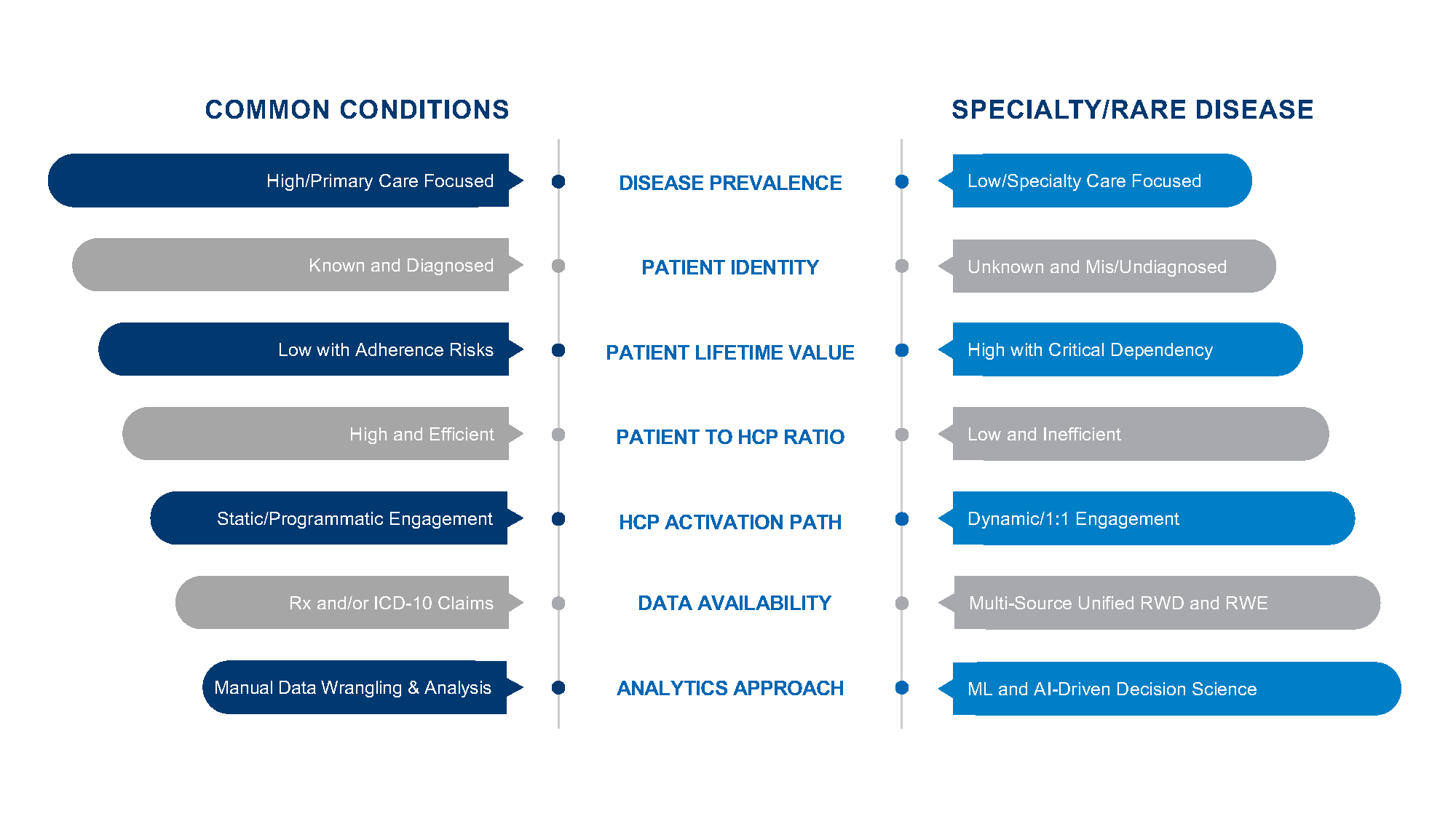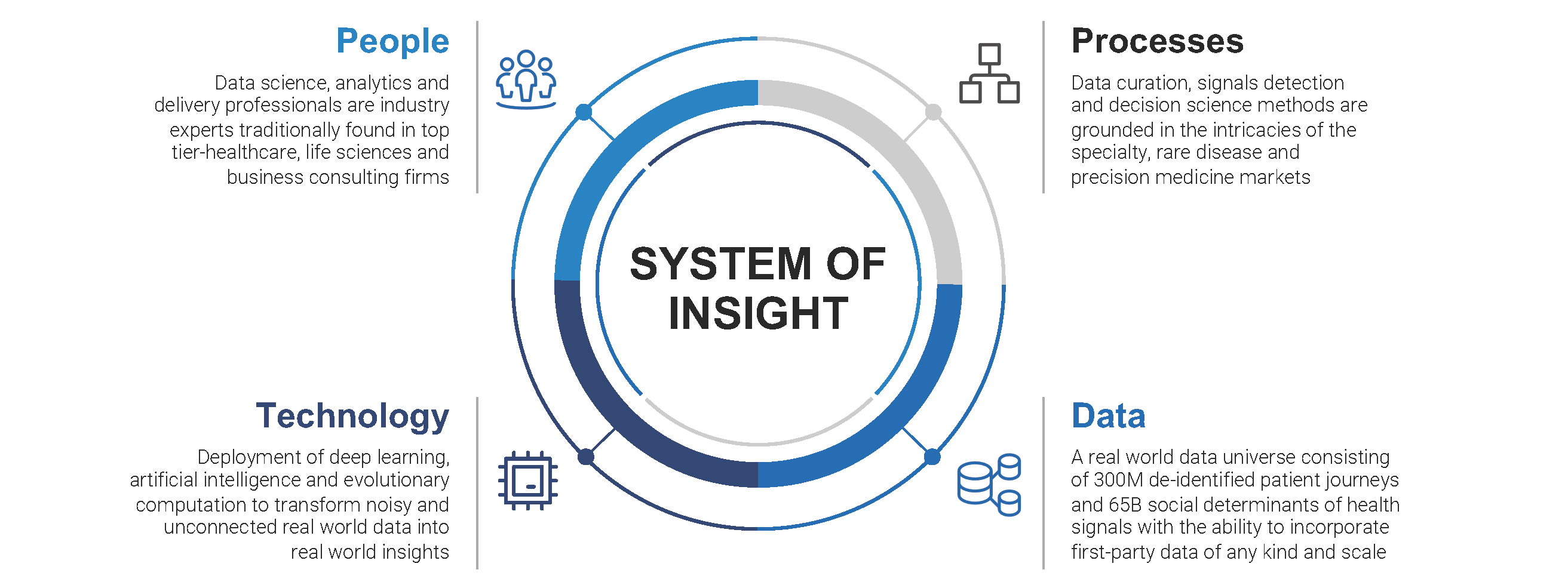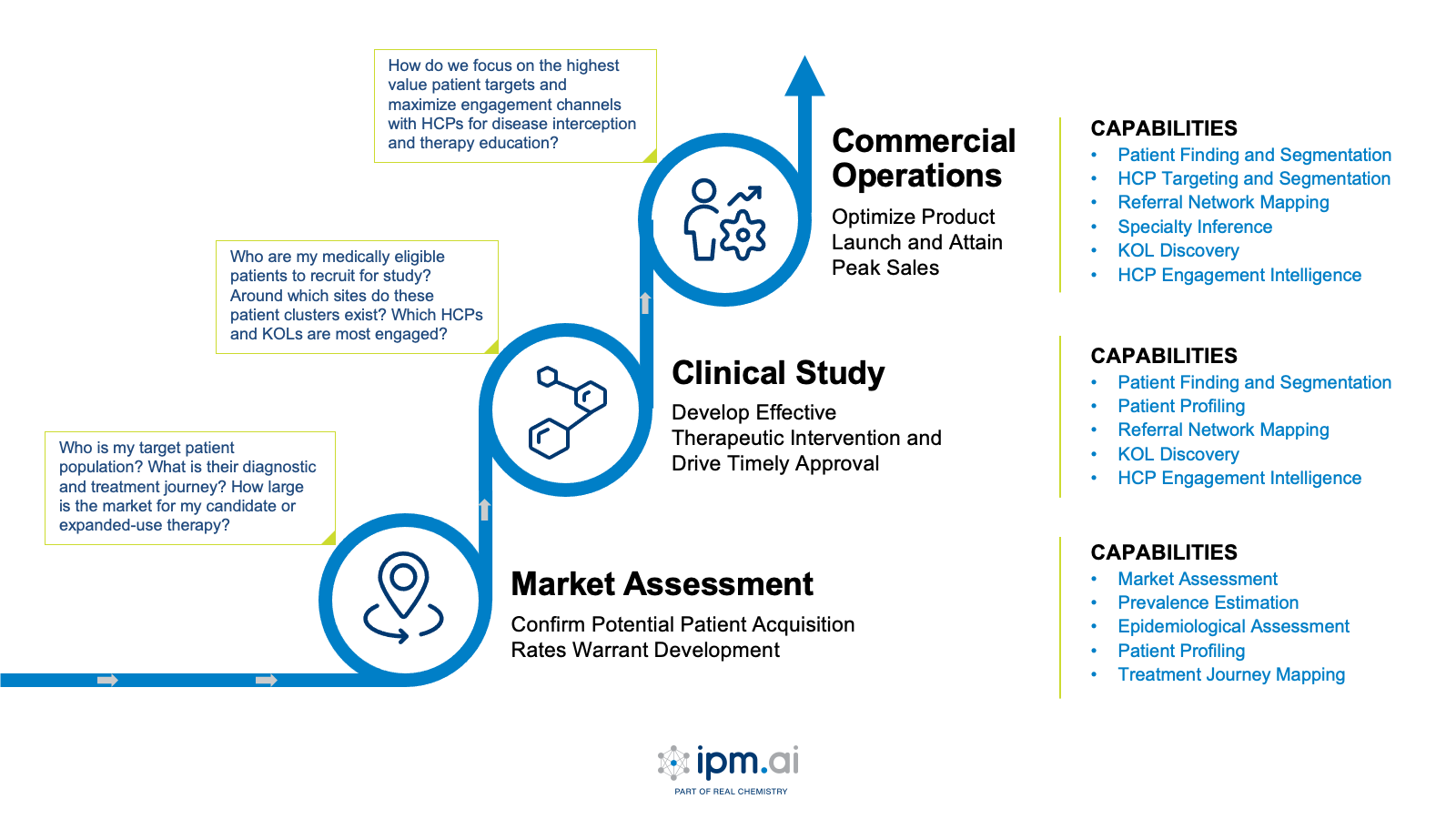1 min read
Using Predictive Intelligence to Uncover the Rare Disease Patient Journey
In this podcast interview, Dan Fisher, managing director and practice lead for IPM.ai, explains the use of artificial intelligence for stitching...
3 min read
![]() Emilie Branch
Oct 14, 2021 2:53:43 PM
Emilie Branch
Oct 14, 2021 2:53:43 PM

By: Dan Fisher, Principal, IPM.ai
Life sciences and healthcare companies that set out to pioneer treatments in rare and specialty disease face a unique set of challenges. Typical pitfalls for advancing an indication in this space include a limited patient population that is unaware of their diagnosis, HCPs who are only versed in the specifics of an “organ” and therefore fail to recognize the diffuse symptomology characteristic of these conditions, as well as an ambiguous and extensive patient treatment and diagnostic journey. Instead of approaching these indications like those for common illnesses, companies must rely on a System of Insight powered by Augmented Intelligence – a concept that utilizes Machine Learning and Artificial Intelligence in conjunction with a curated pool of “smart, real-world data” to enhance, rather than replace, human decision-making. Through this personalized, real world data-driven approach, patients and their treating HCPs can be uncovered, enabling optimal patient outcomes quicker and with less risk.

A System of Insight carefully unifies people, processes, technology and data to provide insight into the specialty and rare disease marketplace. It serves as a single source of the patient equation throughout the product lifecycle of specialty and rare disease therapies, driving the greatest impact on decision points for three critical phases: Market Assessment, Clinical Study and Commercial Operations.

Market Assessment
Confirm Potential Patient Acquisition Rates Warrant Development
Market assessment is a crucial initial phase for bringing a drug to market and understanding its potential reach, penetration and lifetime value. Though this practice is relatively straightforward for common conditions, rare and specialty diseases are defined by patients that are unaware of their diagnosis. Searching through patient registries, mining clinical data and interfacing with support groups will not capture those who haven’t formally been diagnosed and as such, is inherently limited. However, by employing a System of Insight, patients with a high propensity of disease affliction are uncovered, often leading to a much more robust patient pool. After patients are discovered, a System of Insight reveals their treating HCPs — including those who are “hidden” because they aren’t formally designated as a relevant specialty care provider — and provides knowledge of the patient journey, epidemiology, symptomatology and disease prevalence.
Clinical Study
Develop Effective Therapeutic Intervention and Drive Timely Approval
Rare and specialty diseases have such low prevalence that they typically lack ICD-10 codes and are often unknown to HCPs, who fail to recognize their wide-ranging symptomatology. This has a tremendous impact on patients, as they are continuously bounced around by doctors to no avail, which can prolong their treatment journey and lead to skepticism of the healthcare community. In addition to a dearth of treatment options, these patients are also unable to seek out potentially life-altering clinical trials. However, a System of Insight can be utilized to optimize trials by uncovering clusters of undiagnosed/misdiagnosed patients and their physicians based on geography, aiding in site selection. By discovering medically eligible patients whose behavior indicates a likelihood of enrollment and retention, the risk of screening failure and drop-out is greatly minimized. The impact is significant, with a 35% reduction of the typical multi-year study recruitment timeline and millions of dollars saved in the process.
Commercial Effectiveness
Optimize Product Launch and Peak Revenue Attainment
The goal of any program is to treat the greatest patient population, establish the therapy as a standard of care, fully realize the patient lifetime value and maximize shareholder return on investment. Achieving this trajectory toward peak revenue is possible through a System of Insight, in which ideal HCPs can be discovered, mapped and engaged. By targeting physicians treating high propensity patients, MSLs and field representatives can be strategically deployed to intercept the patient journey and provide education without wasting time, budget or effort.

By creating 1:1 channels of engagement with key HCPs, patient conversion is more likely as patients value HCP opinion and trust their advice over less targeted messages received via programmatic, social media or television advertising. Healthcare and life sciences organizations concentrating on the specialty or rare disease market will benefit from a System of Insight and should embed this technology into their processes throughout the product lifecycle to increase the chances of success and advance the industry-wide goal of precision medicine through data analytics.
Principal, IPM.ai

|
As Principal for IPM.ai, Dan leads a team that utilizes machine learning, artificial intelligence and advanced analytics to deliver valuable insights that guide and accelerate the clinical and commercial decisions of life sciences companies. With a focus on specialty markets, Dan’s deep expertise in rare disease and oncology disease states helps biopharma clients better understand and more effectively uncover ideal patients and their health care providers. Prior to joining IPM.ai, Dan led commercial operations and clinical analytics projects for ZS Associates. He holds a Master of Business Administration (MBA) from Vanderbilt University. |
1 min read
In this podcast interview, Dan Fisher, managing director and practice lead for IPM.ai, explains the use of artificial intelligence for stitching...
87% of Biopharma Respondents Use AI/ML for Post-Market Activities, But Key Missed Opportunities Remain